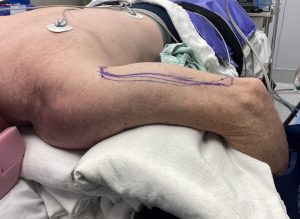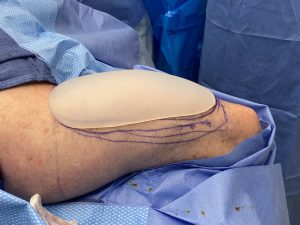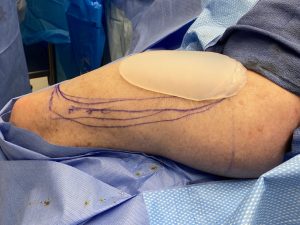Background: The tricep muscle primarily creates extension of the upper arm through three heads of the muscle. Despite being comprised of three muscles two of them (the long and lateral head) comprise most of what we see and run the full length of the back of the arm. In the upper arm the close proximity of the long and lateral heads of the muscle creates the horseshoe shape seen when the muscle becomes extremely well developed in body builders.
Tricep muscle asymmetry can occur from muscle rupture or from loss of neural input from various nerve injuries. Once the muscle volume is lost from these causes it is impossible to build it back up from exercise. Aesthetic camouflage can be done by fat injections or implants. But once the fascia around the muscle constricts down around the reduced muscle volume fat will not re-expand this tightened facial sleeve.
Tricep implants can be placed in either the subfascial or submuscular location. There are arguments to be made for both locations but given the long lengths of the tricep muscle the subfascial location offers the ability to place a long implant that is aesthetically more compatible with the shape of the muscle in both extended and flexed arm position.
In tricep muscle asymmetry due to injury, when both arms are to be augmented, this requires two differently sized implants with expected difficulties in implant placement in the smaller shrunken muscle.
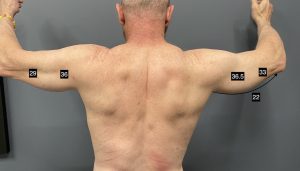
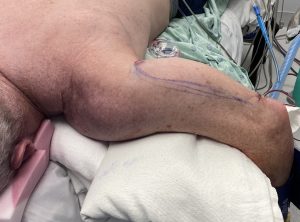
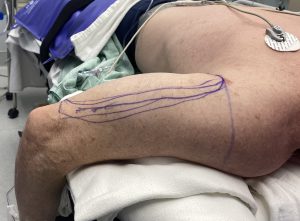
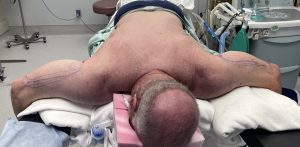
Key Points:
1) Tricep muscle asymmetry is usually most evident in the distal half of the muscle near the elbow.
2) Implant augmentation of part or all of the atrophic tricep muscle depends on what is being down with the other tricep…if anything.
3) Tricep muscle augmentation is most commonly performed by subfascial implants.
Dr. Barry Eppley
World-Renowned Plastic Surgeon



